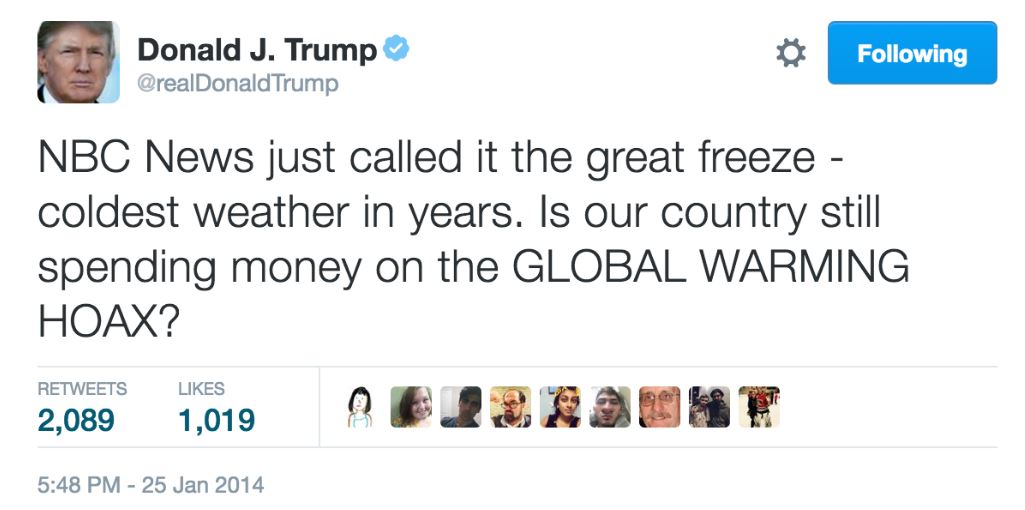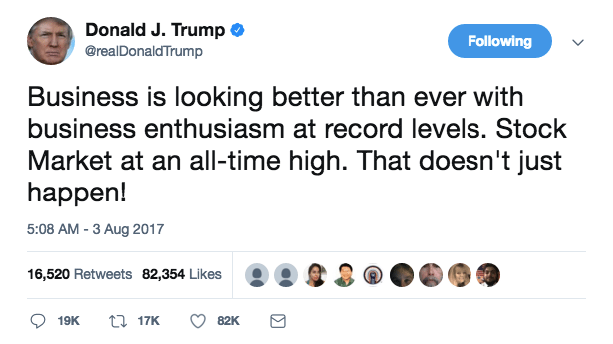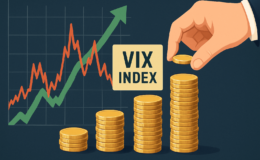Stock Market is like Climate Change: Keep your Eye on the Man, not the Dog
- By : Menard
- Category : Investing
- Tags: Climate change, Neil deGrasse Tyson, Stock market

In episode 12 of the fascinating science mini-series, Cosmos, Neil deGrasse Tyson explains why meteorologists suck at predicting the weather. He goes on to explain the difference between weather and climate.
“Weather is what the atmosphere does in the short term, hour to hour, day to day. Weather is chaotic, which means that even a microscopic disturbance can lead to large-scale changes. That’s why those ten-day weather forecasts are useless,” says Tyson, as he walks his canine friend, “Meandering” along the seashore.

An example of a disturbance, Tyson added, is when “A butterfly flaps its wings in Baley, and six weeks later, your outdoor wedding in Maine is ruined.”
Known in popular culture as the butterfly effect– the phenomenon in Chaos Theory in which a tiny change in circumstances can cause a large change in outcome.
On the other hand, Tyson stated, “Climate is the long-term average of the weather over a number of years. It is shaped by global forces that alter the energy balance in the atmosphere such as changes in the Sun, the tilt of the Earth’s axis, the amount of sunlight that reflects back to space, and the concentration of greenhouse gases in the air.”
Nobody should make an assumption that cold weather in New York City is evidence that global warming does not exist.

That same analogy can be applied to the behavior of the Stock Market. The short-term behavior may be chaotic, but the long-term prospect, over a span of many years, is very predictable— it always goes up!
The dog’s path is just noise.
The same “Butterfly Effect” happens in the financial markets. As soon as President Trump or the Fed chairman open their mouths, the next thing you know, several hundred points are slashed off the Dow Jones Industrial Average, often unleashing a domino that will send the MSCI’s index of global stocks down for the day.
The dog’s path can likewise represent the short-term, day-to-day fluctuations, of the markets. But what really matters, if you have a long time horizon, is the long-term, upward direction, of the stock market. If you focus on the wrong signal, you’ll end up with the wrong plan.

The temporary price declines are never pleasant, but you don’t really lose unless you sell. It’s called unrealized losses for a reason. Selling your investments because of fear is not a plan. Many investors regret selling at the bottom of the bear market in March of 2009, turning temporary paper losses into real, wealth-shattering losses.
Keep your eye on the man, not the dog.
The long-term direction of the stock market is upward.
If you happen to be one of the 20 or 30-something, millionaire-wannabes, I have good news for you. Stock investing need not be complicated or risky. When it comes to a broad-based stock index like the S&P 500 or the Dow, all declines are temporary. There’s simply no precedent for permanent losses except for those who sold.
Sadly, the same cannot be said of individual stocks. Time and time again, we see stocks of seemingly great companies go down the toilet: Enron, K-Mart, Lehman Brothers, Kodak, and Sears, to name a few. The average investor should avoid buying individual stocks altogether.
But as the global population grows and economies thrive, great companies in both the U.S. and beyond will continue to expand, grow, and innovate. Let us not forget that a major stock market index like the S&P 500 or Dow is a list of the most profitable companies in the economy that it represents. The simplest path to wealth is to buy the index and maintain a long-term perspective.
Stay the course, and you will be rewarded handsomely.

Readers, I’d like to greet you all a very Merry Christmas and a Happy New Year!




No Comments